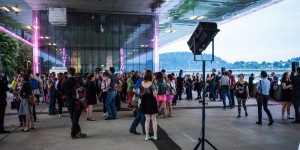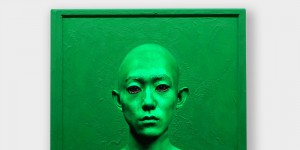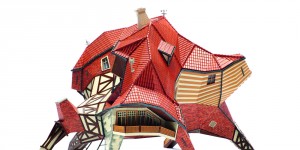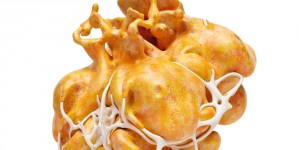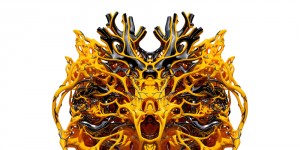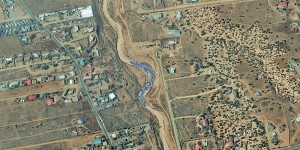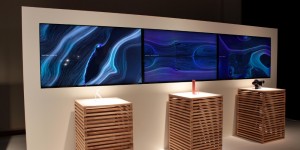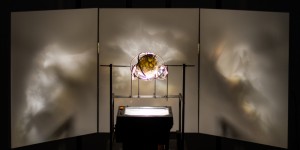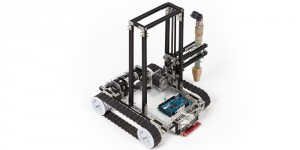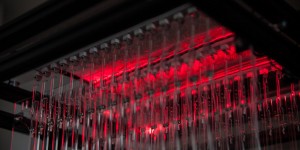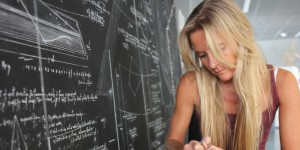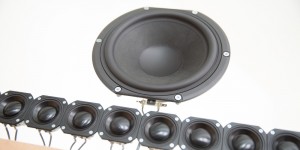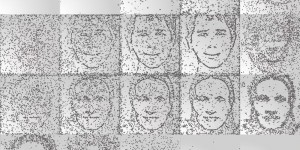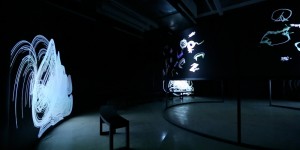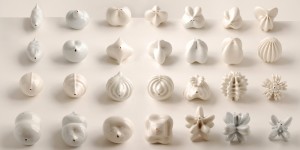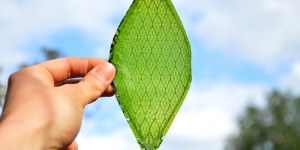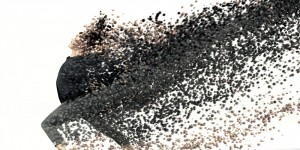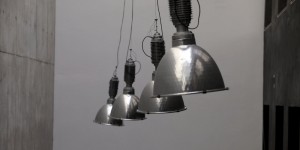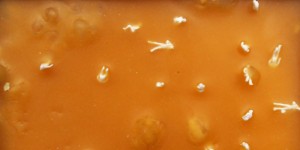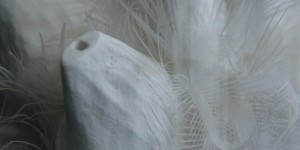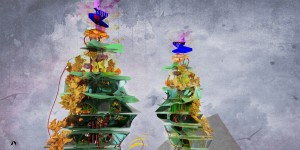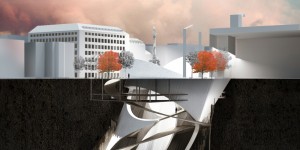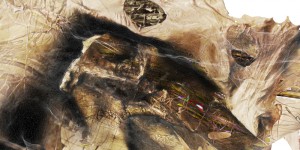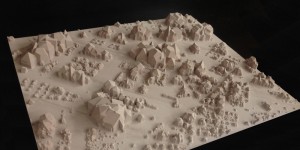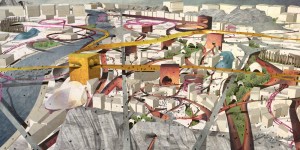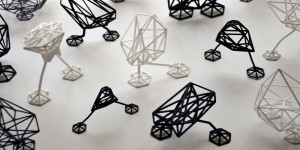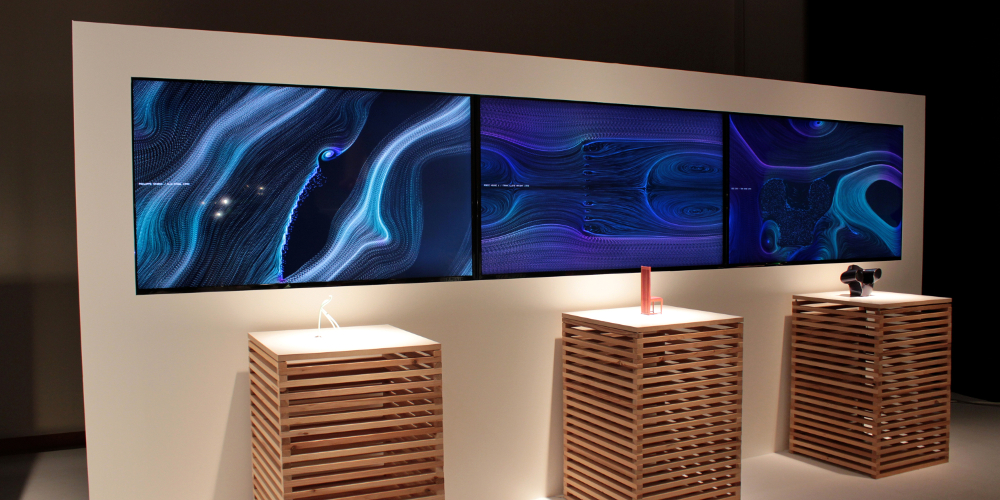
Immediately adjacent to CyberArts 2015—both physically and conceptually—is Elements of Art and Science, a presentation of outstanding works whose origins to some extent straddle the worlds of art and science. As diverse as these works are, what they all have in common is financing and support from the Creative Europe programme of the European Commission.
Acoustic Time Travel
Bill Fontana (US)
Bill Fontana (US), 2013 recipient of the Prix Ars Electronica Collide@CERN Residency, created Acoustic Time Travel in conjunction with his residency at CERN. The artist explored that facility on the acoustic level, recorded noises and combined them into a new sound sculpture.
A particular kind of conversation
Semiconductor (Ruth Jarman, Joe Gerhardt/UK)
In their art works the artist duo Semiconductor explores the fundamental material nature of our world and how we experience it through the lens of science and technology, investigating how devices mediate our experiences of nature and position man as an observer of the physical world. They combine methods of filming, animation, sound and dialogue; re-working and combining actual elements of the scientific language of particle physics (verbal, visual, aural, technological…) into new forms.
Architectural SonarWorks
Cedric Brandilly (FR)
The aim of Architectural SonarWorks is to create a musical/audio language based upon cartographic statements and architectural characteristics which belong to a definite space. It also consists in imagining architecture as a partition.
Augmented Hand Series
Golan Levin (US), Kyle McDonald (US), Chris Sugrue (US)
The Augmented Hand Series is a real-time interactive software system that presents playful, dreamlike, and uncanny transformations of its visitors’ hands. Conceived as a tool for muddling embodied cognition, the installation consists of a box into which a visitor inserts their hand, and a display that shows their “reimagined” hand, altered by various dynamic and structural transformations.
Bizzarie die varie figure
Giovanni Battista Braccelli (IT)
Braccelli’s Bizzarie di varie figure from the 17th century contains a suite of 50 etchings that celebrate the human figure in geometric forms. Squares, triangles, circles, and parallelograms take the place of muscle, bone, and tissue, defining the body in a new visual vocabulary – and thus connecting with the works of Universal Everything (UK).
Body Paint
exonemo (JP)
This work uses body painting to examine our physical definitions, our physicality, in a world of networked information devices. Each work in this portrait series features a person, nude, shaved, and painted entirely in a single shade of color, displayed on an LCD that has been entirely painted in the same color except for the human subject on the screen. The boundaries between background and foreground are erased—a human body and an electronic display body are both covered in the same color paint—and the works evoke the themes of ambiguity and confusion, and whether the individual depicted is a human being or a picture of a human being.
D-Dalus: A New Way of Traveling
formquadrat (AT), Meinhard Schwaiger (IAT21 GmbH/AT)
The D-Dalus is the “enfant terrible” of the aircraft industry with outstanding and surprising new flight features. The D-Dalus can do more than just fly … it can also start and land vertically, float, and turn on its axis. When the engines are switched off for a fraction of a second, the D-Dalus can even suction itself onto the landing surface, thus enabling it to land on ships or other planes.
Nick Ervinck (BE): Selected Works
Viunap
Nick Ervinck (BE) uses traditional cottages, which he turns into absurd buildings. The cottages become figures with connotations to crabs and other sea animals that walk along the beach, resembling the impossible structures in the engravings of the mathematician Escher (1898-1972).
Elbeetad
Elbeetad is a 3D print inspired by the voluptuousness of the so-called “Rubens woman”. It brings into question the “skin” of the sculpture.
Agrieborz
For Agrieborz, Nick Ervinck used imagery of human organs that he found in medical manuals as construction materials to create an organic form. Though imaginary, it seems to retain some familiarity due to its visual connection to human organs, muscles, and nerves.
Ayamonsk
Ayamonsk is derived from vegetable structures and coated with a glossy varnish which in turn refers to the virtual genesis of this form.
Nikeyswoda/Garfinoswoda
Nikeyswoda und Garfinoswoda seem made out of two components but are printed as one entity.
Bortoby
Bortoby is clearly animal-like, but is impossible to define well.
Flash Flood
350.org (US)
Working with artists in 16 different communities and thousands of volunteers, 350.org coordinated massive human sculptures that were photographed from satellite. The project began on November 20, 2010 with a human “flash flood” in Santa Fe, New Mexico. Over a thousand local citizens stood in the dry Santa Fe riverbed, designated as one of America’s most endangered rivers. To illustrate their vision for a living river and a sustainable ecosystem, New Mexicans of all ages and faiths carried and flipped blue-painted recycled cardboard and other blue materials composing a visual flash flood in the dry riverbed.
Furnished Fluids
Akira Wakita (JP)
Furnished Fluid is a visualization that utilizes the air flow that we are practically unaware of in our daily lives. This installation, which integrates design miniatures and real-time images, enables us to use the power of science to make visible the appealing and valuable aspects of 20th century industrial design. W. W. Stool (1990) by Philippe Starck, Hill House 1 (1902) by Charles Rennie Mackintosh, and the Big Easy (1991) by Ron Arad were selected in tribute to these great designers.
Kepler’s Dream
Ann-Katrin Krenz (DE), Michael Burk (DE)
Kepler’s Dream is an aesthetical investigation, exploring obsolete projection technologies in combination with computationally created content that is given a physical shape through 3D printing.
Minibuilders
IAAC-Institute for Advanced Architecture of Catalonia (ES)
The construction industry is wasteful and inefficient, slow to adopt technologies that are already well established in other fields, such as robotics. Minibuilders is scalable, it supplants one large robot for a number of smaller agile robots, that work together effectively towards a single outcome.
Mirage
Ralf Baecker (DE)
Mirage is a projection apparatus that makes uses of principles from optics and artificial neural network research. Mirage generates a synthesized landscape based on its perception through a fluxgate magnetometer (Förster Sonde).
María Ignacia Edwards works with equilibrium, the lightness and weightlessness of objects that she brings into balance by deploying their own weight or counterweights. Based on her experience at the ESO observatories La Silla and ALMA, María created a “Mobile Instrument”, as the artist calls it, which is able to capture the movement of pieces located at distant places by a musical mechanism as a reference to time and the motion of the universe. She is connecting points for tracing a scale constellation, a map, translated in the walkable city space.
How suitable are media for conveying pure information? Is sound almost completely devoid of its source’s perspective even conceivable? “Planted,” a sound installation that Young Sun Kim created during his residency at the Ars Electronica Futurelab, is an answer to these questions. He used 10 microphones to capture the ambient tonal environment of wildflowers and grasses growing in Linz. Installation visitors experience this entirely via wave field synthesis.
Ryoji Ikeda was the 2014 recipient of the Prix Ars Electronica Collide@CERN Residency Award. At the focal point of Ikeda’s efforts were the process itself and developing as an artist. In this video, Tom Melia, Ryoji Ikeda’s Scientific Inspiration Partner at CERN, talks about the synergies of art and science as well as collaboration among artists and scientists.
Inspired by natural mechanisms and physical phenomena, Julian Melchiorri (IT/UK) conducted laboratory experiments in order to explore the potential for making materials that photosynthesize, and their possible applications. Silk Leaf is the first result of this research. It is a modular device that photosynthesizes, made of a biological material mostly composed of silk protein and chloroplasts.
A lone figure struggles to make his way across a sparse, grassy landscape, seemingly battling the elements as they beat him back. His body starts to decompose, surrendering to the invisible physical forces, and he disappears into a cascade of particles.



